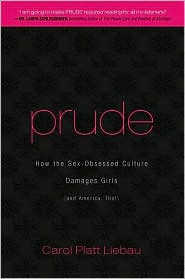O'Connor's "Power Loss"
This piece by Slate's Dahlia Lithwick points out the extent to which Justice Sandra Day O'Connor's judicial "legacy" has been significantly dismantled in just two years' time.
It's hard to see this as much of a surprise. O'Connor's power derived not from the intellectual or theoretical force of her opinions, but rather from her centrist position on the Court. Her ideas found their way into the law not so much because the other justices (left or right) either applauded or agreed with them, but because that was the price of luring her to one's side. If a centrist has a strong judicial philosophy, even such compromise jurisprudence can remain the law for years and years -- but perhaps that's Justice O'Connor's problem: The absence of a strong theoretical judicial philosophy.
As Lithwick points out, some of Justice O'Connor's "greatest hits" included "her 'undue burden' test for abortion restrictions; her 'reasonable observer' test for whether the government has 'endorsed' religion; or her 'someday my prince will come' test for when affirmative action programs might become unnecessary in the future."
What characterizes lots of her work is an unwillingness to lay down a jurisprudential "hard and fast" rule for analyzing cases. Instead, there were multifactor balancing tests and other such frippery. What that means is that, ultimately, the application of a particular decision to other cases will depend on the whims of the district or appellate judges interpreting the relevant Supreme Court opinion. And that's unfortunate, of course, because it undermines the predictability and stability that is supposed to undergird the rule of law.
By all accounts Justice O'Connor is a very gracious, lovely woman. But the kind of jurisprudence she too often practiced -- heavy on "factors," light on easily applicable principles -- seems almost foreordained to be ignored once her vote no longer needs to be solicited.
It's hard to see this as much of a surprise. O'Connor's power derived not from the intellectual or theoretical force of her opinions, but rather from her centrist position on the Court. Her ideas found their way into the law not so much because the other justices (left or right) either applauded or agreed with them, but because that was the price of luring her to one's side. If a centrist has a strong judicial philosophy, even such compromise jurisprudence can remain the law for years and years -- but perhaps that's Justice O'Connor's problem: The absence of a strong theoretical judicial philosophy.
As Lithwick points out, some of Justice O'Connor's "greatest hits" included "her 'undue burden' test for abortion restrictions; her 'reasonable observer' test for whether the government has 'endorsed' religion; or her 'someday my prince will come' test for when affirmative action programs might become unnecessary in the future."
What characterizes lots of her work is an unwillingness to lay down a jurisprudential "hard and fast" rule for analyzing cases. Instead, there were multifactor balancing tests and other such frippery. What that means is that, ultimately, the application of a particular decision to other cases will depend on the whims of the district or appellate judges interpreting the relevant Supreme Court opinion. And that's unfortunate, of course, because it undermines the predictability and stability that is supposed to undergird the rule of law.
By all accounts Justice O'Connor is a very gracious, lovely woman. But the kind of jurisprudence she too often practiced -- heavy on "factors," light on easily applicable principles -- seems almost foreordained to be ignored once her vote no longer needs to be solicited.



0 Comments:
Post a Comment
<< Home